![]() International conference is planned in Vienna from August 19 to 23, 2019, with the title: Stars and their variability, observed from space: Celebrating the 5th anniversary of BRITE-Constellation. More information can be found on the conference website: https://starsandspace.univie.ac.at
International conference is planned in Vienna from August 19 to 23, 2019, with the title: Stars and their variability, observed from space: Celebrating the 5th anniversary of BRITE-Constellation. More information can be found on the conference website: https://starsandspace.univie.ac.at
Stars are the most visible components of the Universe. Most of what we know of the universe comes from studying stars. To understand them is important for many problem areas in astrophysics, ranging from our local solar system with planets to the most distant galaxies. Investigating the variability of Stars provides powerful access to their structure, environment and evolution. Stars are crucial elements for understanding the history and evolution of our Universe, of all galaxies, of our local solar system and Stars host zillions of planets, which we expect to discover in the near future - and how many are habitable?
Stars represent laboratory sites for physical processes that cannot be tested experimentally on Earth. They are crucial for understanding basic physics, such as nuclear physics, particle physics, statistical physics, hydrodynamics, atomic physics and opacities, and more. We are facing the limitations in theoretician's modelling of the basic radiation, plasma and other physics, which oversimplify (or ignore) the treatment of radiation-matter coupling, magnetic fields, dynamical processes, etc. Experience tells that once the physics is properly accounted for, our picture of how stars work frequently has to be substantially changed.
Observing Stars from satellites has significantly increased the data volume and parameter space for a realistic modelling of these most prominent objects in the Universe. Variability can now be traced down to incredibly low noise levels, thanks also to the availability of satellites. New observing capabilities have improved precision and accuracy, which in turn have uncovered new populations of stars and revealed limits in our physical understanding of their structure and evolution. In particular, BRITE-Constellation has demonstrated the unique advantage of small satellites for exploring stars which are bright (and close) enough to allow access to other fundamental techniques, like interferometry, high accurate parallaxes, direct imaging, very high spectral and temporal resolution, etc. These advantages led in 2009 to a funding of the first BRITE satellites.
![]() Unusual explosion in the sky was observed with BRITE satellites in 2018 when the nova exploded. Profesor Rainer Kuschnig of Graz University of Technology in Austria was doing his daily check of the nanosatellites in the BRITE Constellation Project - a Canada-Austria-Poland collaboration - when something caught his eye. What seemed to be a very bright star, one which had not been there the day before, appeared on one of his screens.
Unusual explosion in the sky was observed with BRITE satellites in 2018 when the nova exploded. Profesor Rainer Kuschnig of Graz University of Technology in Austria was doing his daily check of the nanosatellites in the BRITE Constellation Project - a Canada-Austria-Poland collaboration - when something caught his eye. What seemed to be a very bright star, one which had not been there the day before, appeared on one of his screens.
"I've never seen anything like this" wrote Kuschnig to the members of BRITE team. The star was subsequently identified as a nova, a massive explosion that occurs when one small, dense star acquires mass from another closely-located star until the overload results in a violent burst of light and energy.
Only five to 10 novae are observed every year, making them a rare occurrence highly sought-after by astronomers. But this nova in particular was unique for two reasons.
First, it was caught much sooner than usual.
Second, the BRITE team realized just how exceptionally good BRITE instrument is.
The author of the idea and the scientific plan that embeds a series satellites project BRITE, is Professor Sławomir Ruciński, Polish astronomer who lives in Canada and works at the University of Toronto. In 2015 President of Poland has conferred the Order of Polonia Restituta to Professor Ruciński for his outstanding achievements in the field of astronomy. The ceremony took place at the Centrum Badań Kosmicznych PAN in Warsaw.
![]() On 17 December 2018 the scientists from CBK PAN took part in the charity action of the Christmas Tree of Good Hearts in Warsaw.
On 17 December 2018 the scientists from CBK PAN took part in the charity action of the Christmas Tree of Good Hearts in Warsaw.
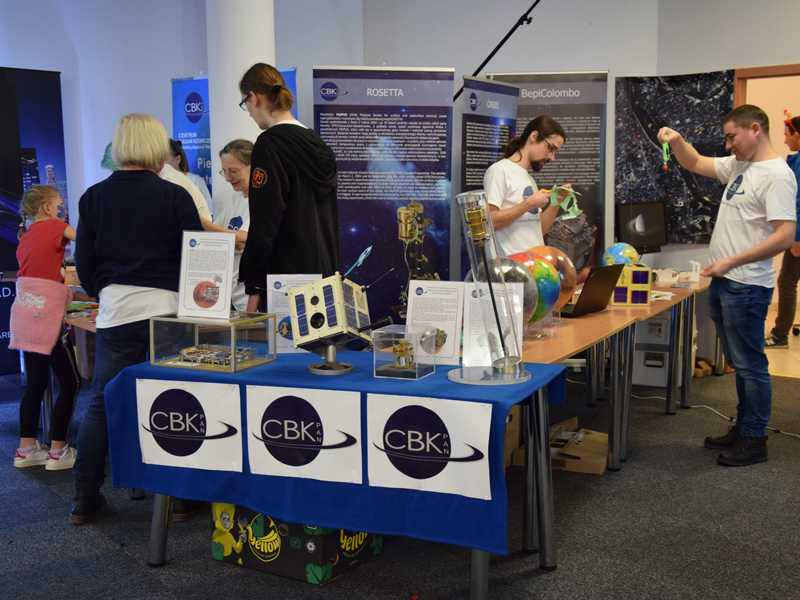 |
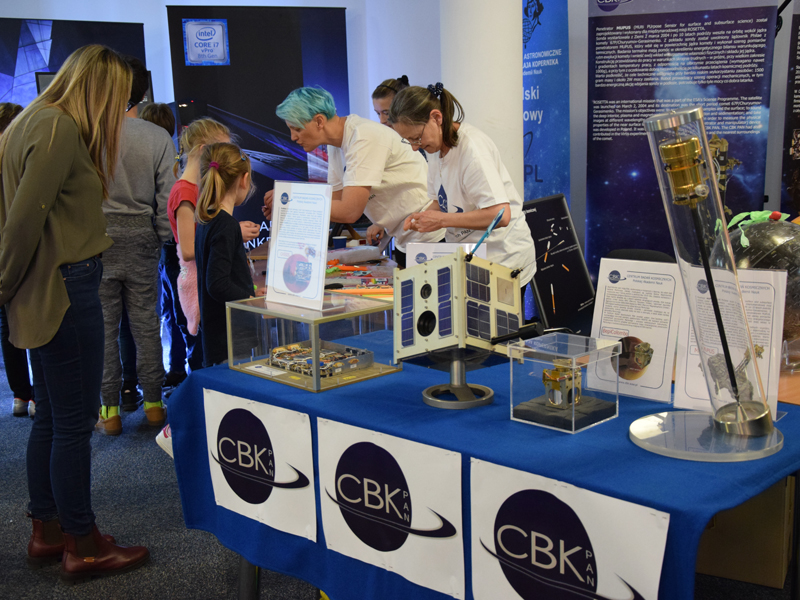 |
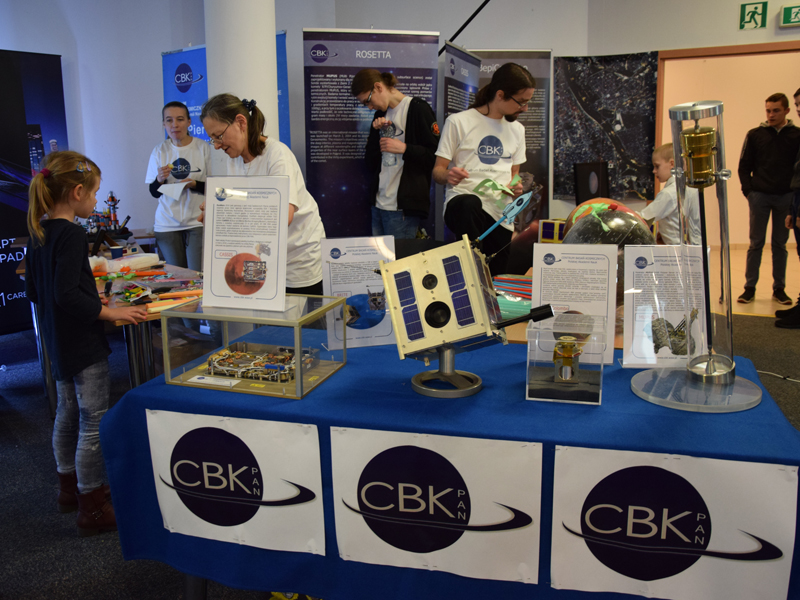 |
 |
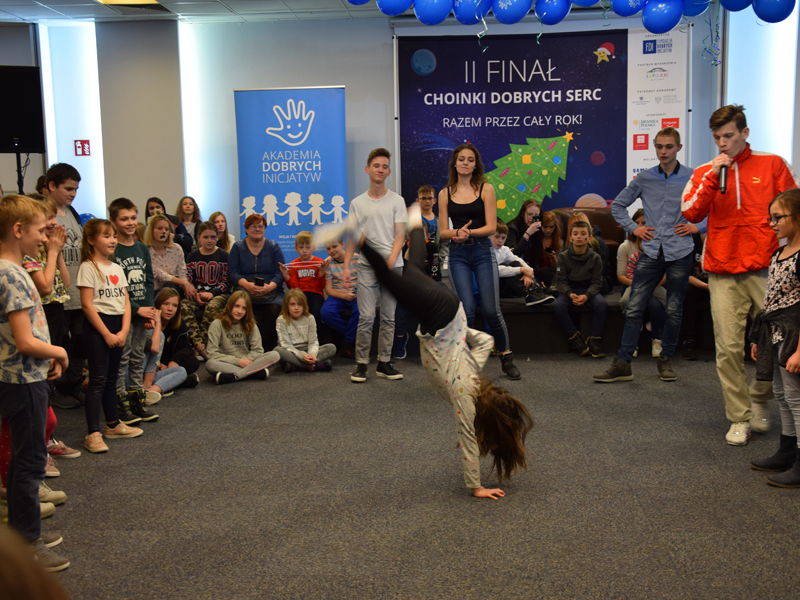 |
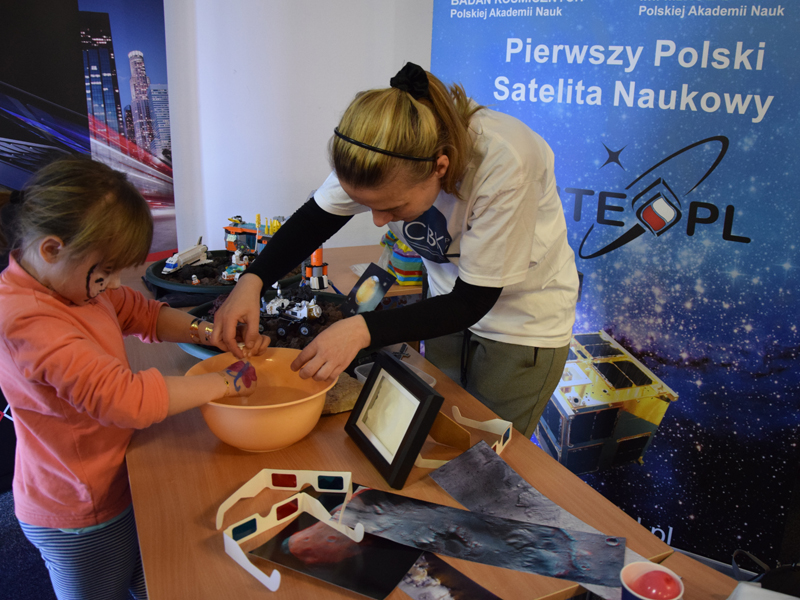 |
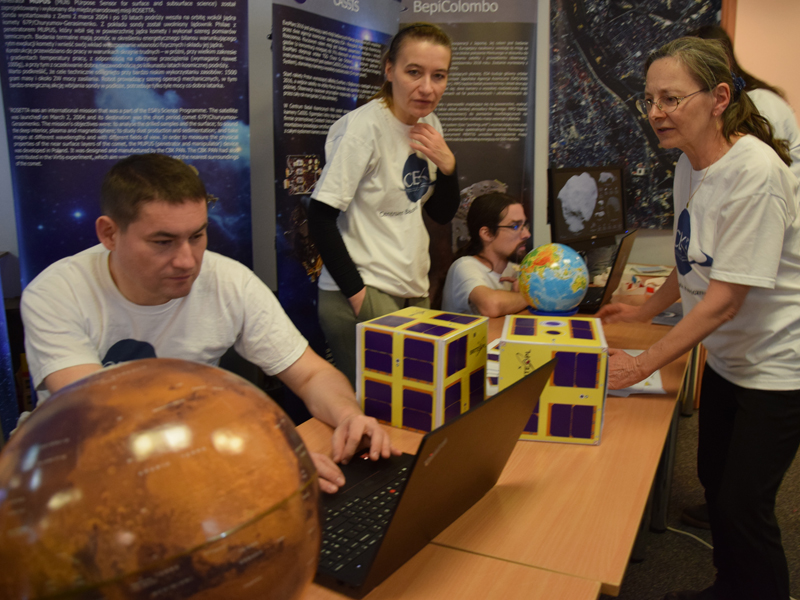 |
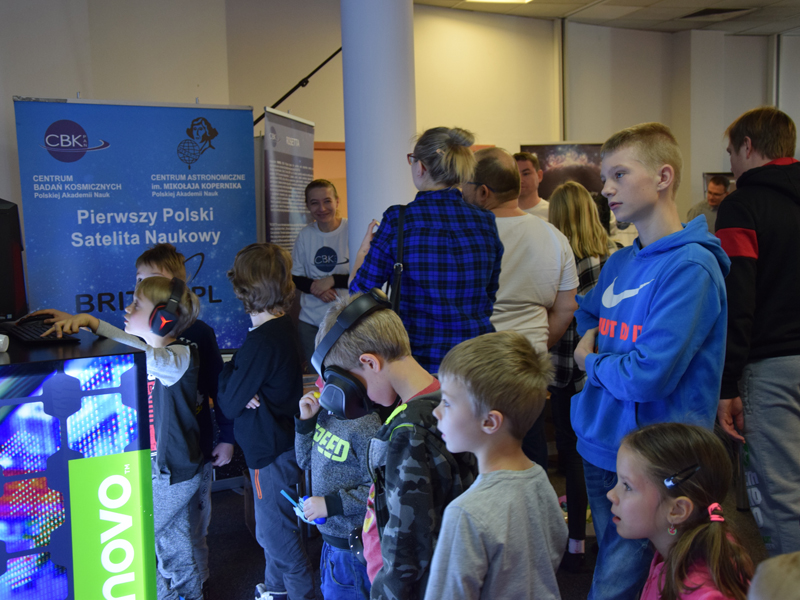 |
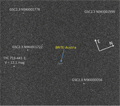
![]() Brite-Austria has been observed on the images from the PST2 telecscope located in Winer Observatory in Arizona. The animation shows a sequence of 20 images of a small field in Orion. BRITE-Austria passes the field in images from 8th to 12th. The images were captured with the Andor iXon X3 EMCCD
camera attached to the PST2 70-cm telescope, the exposure time was only 0.02s. Animation courtesy Krzysztof Kamiński from Poznań Observatory.
Brite-Austria has been observed on the images from the PST2 telecscope located in Winer Observatory in Arizona. The animation shows a sequence of 20 images of a small field in Orion. BRITE-Austria passes the field in images from 8th to 12th. The images were captured with the Andor iXon X3 EMCCD
camera attached to the PST2 70-cm telescope, the exposure time was only 0.02s. Animation courtesy Krzysztof Kamiński from Poznań Observatory.
![]() Astronomers from the BRITE (BRight Target Explorer) Constellation project and Ritter Observatory have discovered a repeating one-per-cent spike in the light of a very massive star which could change our understanding of such stars. Iota Orionis is a binary star system and is easily visible with the naked eye, being the brightest star in the constellation Orion's sword. Its unique variability, reported in the journal Monthly Notices of the Royal Astronomical Society, was discovered using the world's smallest astronomical space satellites, referred to as "nanosats". "As the first functional nanosatellite astronomy mission, the BRITE-Constellation is at the vanguard of this coming space revolution," said Canadian BRITE-Constellation principal investigator Gregg Wade, of Royal Military College of Canada, Ont. Read more at: https://phys.org/news/2017-03-iota-orionis-pulsating-beacon-constellation.html.
Astronomers from the BRITE (BRight Target Explorer) Constellation project and Ritter Observatory have discovered a repeating one-per-cent spike in the light of a very massive star which could change our understanding of such stars. Iota Orionis is a binary star system and is easily visible with the naked eye, being the brightest star in the constellation Orion's sword. Its unique variability, reported in the journal Monthly Notices of the Royal Astronomical Society, was discovered using the world's smallest astronomical space satellites, referred to as "nanosats". "As the first functional nanosatellite astronomy mission, the BRITE-Constellation is at the vanguard of this coming space revolution," said Canadian BRITE-Constellation principal investigator Gregg Wade, of Royal Military College of Canada, Ont. Read more at: https://phys.org/news/2017-03-iota-orionis-pulsating-beacon-constellation.html.
![]() In late 2016/early 2017 several new publications related to BRITE have
appeared. H. Pablo et al. The BRITE Constellation Nanosatellite Mission: Testing, Commissioning, and Operations describe the testing, commissioning and operations of the BRITE satellites. In particular, they show how unexpected technical problems related to high-energy cosmic radiation were mitigated.
In late 2016/early 2017 several new publications related to BRITE have
appeared. H. Pablo et al. The BRITE Constellation Nanosatellite Mission: Testing, Commissioning, and Operations describe the testing, commissioning and operations of the BRITE satellites. In particular, they show how unexpected technical problems related to high-energy cosmic radiation were mitigated.
![]() Another science paper by G. Handler et al.
Combining BRITE and ground-based photometry for the beta Cephei
star ni Eridani: impact on photometric pulsation mode identification and detection of several g modes reports BRITE observations of the previously well-studied pulsating star Nu Eridani and the detection of several long-period oscillations that had not been known before. J. Daszyńska-Daszkiewicz et al. interpret these findings (https://arxiv.org/pdf/1612.05820v1.pdf) and suggest that the opacities, one of the most important ingredients used in stellar model computations, are still underestimated.
Another science paper by G. Handler et al.
Combining BRITE and ground-based photometry for the beta Cephei
star ni Eridani: impact on photometric pulsation mode identification and detection of several g modes reports BRITE observations of the previously well-studied pulsating star Nu Eridani and the detection of several long-period oscillations that had not been known before. J. Daszyńska-Daszkiewicz et al. interpret these findings (https://arxiv.org/pdf/1612.05820v1.pdf) and suggest that the opacities, one of the most important ingredients used in stellar model computations, are still underestimated.
![]() The first three scientific papers presenting results of the BRITE satellite mission have been published in the April 2016 issue of Astronomy & Astrophysics. The BRITE mission consists of six nanosatellites of which two, Lem and Heweliusz, are the first Polish scientific satellites.
The first three scientific papers presenting results of the BRITE satellite mission have been published in the April 2016 issue of Astronomy & Astrophysics. The BRITE mission consists of six nanosatellites of which two, Lem and Heweliusz, are the first Polish scientific satellites.
The papers are devoted to four bright stars of the southern sky located in the second stellar field observed by BRITE, the Centaurus field. These are alfa Circini, beta, eta and mi Centauri. alfa Circini is a rapidly oscillating Ap star, the brightest representative of this interesting class of pulsating stars having strong magneting fields and explained by the model of oblique rotator. With BRITE data, two known pulsation modes were confirmed, but for the first time it was shown that rotational variability is different in blue and red passbands. (Weiss et al., A&A 588, A54: The roAp star alfa Circinus as seen by BRITE-Constellation).
![]() The next studied star, beta Centauri (Agena or Hadar), is a triple system with two massive components in a 357-day eccentric orbit. BRITE data allowed to discover as many as 17 pulsation modes, including both acoustic and gravity modes, which makes it a hybrid ß Cephei/SPB star. Prior to the study with BRITE data, only two modes were known. Since ß Cen has a very rich set of archival observations, the analysis of combined spectroscopic and interferometric data allowed to derive masses of the two massive components, equal to 12.0 i 10.6 solar masses, with a precision of the order of one per cent. The masses were subsequently used in modelling pulsations of the components. In view of a rich spectroscopic archive, ß Cen may become a key object in future studies of ß Cephei and SPB pulsations in fast-rotating stars. Undoubtedly, owing to the BRITE observations, a sample of massive pulsating stars for which seismic modelling will become possible, will be increased several times. This opens a possibility of a widespread application of asteroseismology in these stars that can bring a breaktrough in our understanding of the internal structure of massive stars. (Pigulski et al., A&A 588, A55: Massive pulsating stars observed by BRITE-Constellation).
The next studied star, beta Centauri (Agena or Hadar), is a triple system with two massive components in a 357-day eccentric orbit. BRITE data allowed to discover as many as 17 pulsation modes, including both acoustic and gravity modes, which makes it a hybrid ß Cephei/SPB star. Prior to the study with BRITE data, only two modes were known. Since ß Cen has a very rich set of archival observations, the analysis of combined spectroscopic and interferometric data allowed to derive masses of the two massive components, equal to 12.0 i 10.6 solar masses, with a precision of the order of one per cent. The masses were subsequently used in modelling pulsations of the components. In view of a rich spectroscopic archive, ß Cen may become a key object in future studies of ß Cephei and SPB pulsations in fast-rotating stars. Undoubtedly, owing to the BRITE observations, a sample of massive pulsating stars for which seismic modelling will become possible, will be increased several times. This opens a possibility of a widespread application of asteroseismology in these stars that can bring a breaktrough in our understanding of the internal structure of massive stars. (Pigulski et al., A&A 588, A55: Massive pulsating stars observed by BRITE-Constellation).
![]() Finally, the third paper (Baade et al., A&A 588, A56: Short-term variability and mass loss in Be stars) is devoted to two bright Be stars, eta and mi Centauri. Be stars are fast-rotating stars having circumstellar discs. The mechanism of feeding disk with matter is still not explained. The analysis of BRITE data of eta Cen showed that interaction of closely spaced in frequency g modes may play a crucial role in this process. In order to verify this hypothesis, analysis of the photometry of the other Be stars will be required. Fortunately, there are many Be stars among BRITE targets.
Finally, the third paper (Baade et al., A&A 588, A56: Short-term variability and mass loss in Be stars) is devoted to two bright Be stars, eta and mi Centauri. Be stars are fast-rotating stars having circumstellar discs. The mechanism of feeding disk with matter is still not explained. The analysis of BRITE data of eta Cen showed that interaction of closely spaced in frequency g modes may play a crucial role in this process. In order to verify this hypothesis, analysis of the photometry of the other Be stars will be required. Fortunately, there are many Be stars among BRITE targets.
![]() The first scientific paper produced using data collected by the nanosatellites forming the BRITE-Constellation (BRIght Target Explorer), to be published in an upcoming issue of the journal Astronomy & Astrophysics, is revealing new information about a well-studied star, Alpha Circini.
The first scientific paper produced using data collected by the nanosatellites forming the BRITE-Constellation (BRIght Target Explorer), to be published in an upcoming issue of the journal Astronomy & Astrophysics, is revealing new information about a well-studied star, Alpha Circini.
"Our analysis of the BRITE data revealed behaviour in this star that has not been observed before," said Professor Werner Weiss from the University of Vienna, Austrian Principal Investigator for BRITE and lead author of the paper. "BRITE-Constellation showed complex behaviour in Alpha Cir due to both rotation and pulsation. Moreover, that behaviour is different when observed in different colours. This result clearly demonstrates the power of BRITE-Constellation and the unique science that is possible using these tiny two-colour precision instruments in space." (more)
![[Pan Twardowski i Brites]](image/inne/krauze.png)
![]() The more information about BRITE-PL.
The more information about BRITE-PL.


